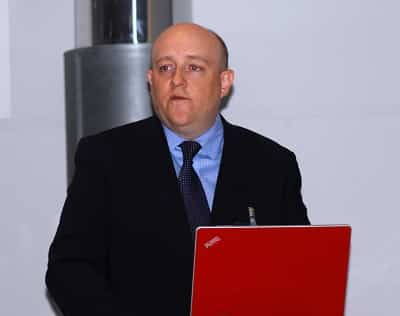A Summary of the First Construction Equipment Sector Report in 10-years and New Business Funding for the Off-Highway Sector announced.
The 2014 Construction Equipment Sector Report was formally launched at the CEA’s Innovation and Engineering Conference on 10thJune at Loughborough University. The report was commissioned by the CEA with the support of the Department for Business, Innovation & Skills (BIS).

Business Minister Michael Fallon said: “The results from CEA’s latest survey clearly show that the construction and off-road vehicle industry remain a key contributor to the UK’s prosperity. With UK company sales now over £11bn for the first time, it is important that we continue to provide the right conditions so industry can continue to thrive.
“That is why we are investing over £1 billion jointly with industry through initiatives such as the Advanced Propulsion Centre (APC) and a planned Technology Strategy Board (TSB) project to ensure companies across the sector have the support they need to develop the technologies of the future.”
The report revealed that the UK industry’s output, in value terms, is close to or exceeding pre-recession levels, although unit terms continues to be well below. Despite the recession that saw UK production in unit terms fall over 50% the industry has remained resilient. Total revenue is estimated at over £11Bn in 2013 – OEMs dominate revenues, followed by importers and distributors. Excluding the latter revenues are around £8Bn. Component, services and related products account for over £2Bn. Manufacturing therefore accounts for over £7Bn of the total.
Companies throughout the supply chain are optimistic about future demand and sentiment is very positive, with most companies reporting that they are much stronger than before the recession.
Improved productivity has resulted in limited employment growth, but companies are now investing profits resulting from higher margins. Employment is lower, but companies are seeking to continue to hire, although skills requirements are different than pre-recession.
Markets have evolved, with emerging markets accounting for most of the growth in sales, traditional markets remaining depressed. Having faced one of the most severe economic downturns this generation the industry has now recovered and is working to grow again, facing many global economic, legislative and commercial challenges. China and other emerging markets will account for around 50% of industry revenue in 2014, according to some figures.
Despite the continued Eurozone recession the UK’s industry remains one of the world’s largest exporters, with a significant 10% share of global production of major pieces of equipment.
Future innovation will require training and education in new skills and at the conference the CEA launched its CEA Skills Advisory Panel – which is a new initiative to address skills issues in the construction equipment sector.
Machines are gaining more and more electronic functions, switching from purely mechanical functionality, driving a need for new electronic engineers, and creating opportunities in the supply chain.
The future needs collaborative development and investment. The UK industry will have to focus on maximizing the benefits of its key strengths and invest in the opportunities to mitigate any weaknesses and current and emerging threats. Which of these might be considered most critical to address:
Strengths
- Flexible, skilled workforce
- Strong component supply chain
- Leading European production location
Weaknesses
- UK industry includes various OEMs, but of these only JCB is UK owned. This leaves the UK open to influence of overseas decision makers.
- Limited availability of some skill sets including engineering graduates and electronic specialists
Opportunities
- Development of niche products for global markets
- Return to growth in UK and EU markets
- Future CO2 related emissions
- Increasing strength of UK advanced automotive R&D
Threats
- Continued growth in emerging markets may see them become more attractive as production locations for advanced products.
- CO2 legislation could become a major threat if companies do not continue to improve the efficiency of their machines.
Conclusions and Recommendations
- Investment in advanced electronics capability with development of transferable skills between automotive and related industries.
- Further investment in training and apprenticeship programs.
- Cross fertilisation of advanced design, manufacturing and product technologies between automotive and construction, not only in advanced powertrain but also electronics, controls and telematics.
- Development of a detailed technology roadmap for the global sector.
- Competitiveness of UK industry compared to less regulated markets needs to be maintained and supported.
- Support for CO2 legislation based on machine productivity improvement, not solely engine CO2 emissions.

CEA Chief Executive, Rob Oliver, states, “The report is a useful piece of work which will help set the CEA’s work programme going forward, and we are grateful for the sponsorship of BIS in making it possible. As a result of the feedback we have received from CEA member companies, we have initiated a Skills Advisory Panel, drawn from different stakeholders in and around the industry, to see how we can make a better collective impact on the issue.”
The Report also focuses on the application of newer technologies in the sector. The Technology Strategy Board (TSB) confirmed that they will be launching a new multi-million pound competition for funding innovation projects in the Off Highway Sector which aligns with the recommendations of the Report. Jon Horsley, a Lead Technologist for the TSB, set out the timetable and procedures of the competition at the conference. Other speakers included Tony Pixton, the Chief Executive of the Advanced Propulsion Centre and Chris Thorne, Strategy and Programme Manager for the Energy Technologies Institute.
Delegates to the conference also saw a display of cutting edge technology equipment from CEA members including Bomag, Caterpillar, JCB, Komatsu, Nylacast , Perkins TCP and Volvo.
 Constructionshows
Constructionshows